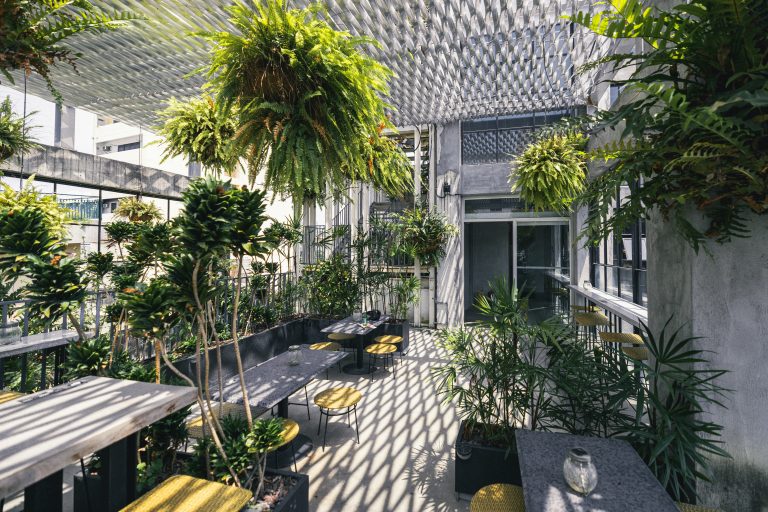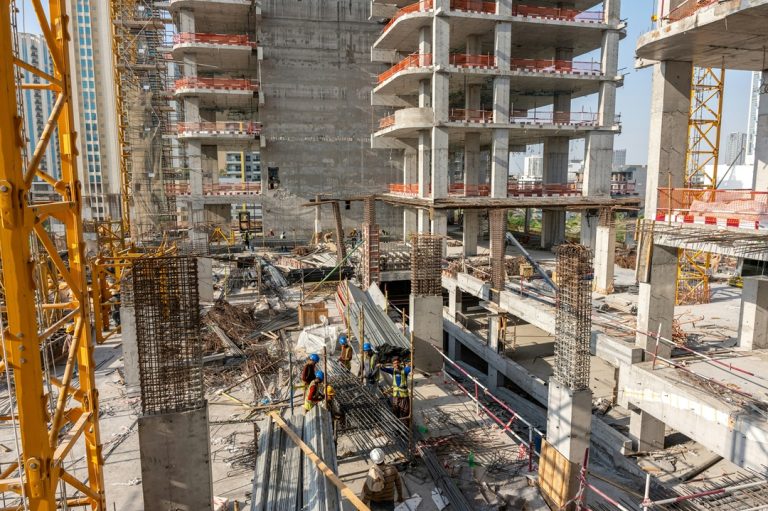In the competitive landscape of hospitality, the guest experience is paramount. Every detail contributes to the carefully curated ambiance that welcomes, relaxes, and delights. Yet, one of the most powerful and often overlooked elements in crafting this experience is sound. At Focus Acoustics, we believe that exceptional acoustic design is not just about mitigating noise; it’s about creating a holistic sensory environment.
Today, a new frontier in acoustic excellence is emerging, one that marries the art of sound control with the principles of nature and sustainability. This is the world of biophilic design, and it’s revolutionizing how we think about the sound of hospitality. But first, what exactly does it mean?
First Principles: What is Biophilic Design?
At its core, biophilic design is based on the simple truth that we, as human beings, have an innate and deeply ingrained attraction to nature. The term literally means ‘love of life’. In the world of architecture and interior design, it is a philosophy that seeks to connect people with nature within the built environment.
This goes far beyond simply placing a few potted plants in a corner. It’s an intentional design strategy that incorporates natural elements to create spaces that feel good to be in. This can include:
- Direct connections: Bringing in living plants, water features, and natural light.
- Indirect connections: Using natural materials like wood, stone, and wool, as well as mimicking the shapes, patterns, and colours found in the natural world.
The goal, as stated by the late, pioneering academic Stephen R. Kellert, is to create…
“good habitat for people as a biological organism in the modern built environment that advances people’s health, fitness and wellbeing.”
By satisfying this subconscious human need for nature, we create environments that reduce stress, improve mood, and enhance our sense of vitality, a perfect formula for an unforgettable hospitality experience.
From Sight to Sound: Acoustics as a Wellness Feature
Now, how does this powerful design philosophy translate to acoustics? This is where our work gets truly exciting. We move from the visual to the auditory, applying biophilic principles to shape how a space sounds and feels.
For too long, acoustic treatment has been a purely technical, often invisible, consideration. But what if your acoustic solutions could do more? What if they could become a visible testament to your brand’s commitment to guest well-being? Instead of generic fabric-wrapped panels, imagine a restaurant where lively conversation is perfectly balanced by elegant slatted wood walls that evoke the tranquility of a forest. Picture a hotel lobby where the stress of travel melts away, aided by the subtle sound absorption of a stunning preserved moss wall.
These materials (wood-fibre panels, cork, and felt made from recycled fibres) offer excellent sound absorption while adding warmth, texture, and a direct visual link to the natural world. This approach doesn’t just quiet a room; it enriches it, contributing to a restorative atmosphere that modern, mindful guests increasingly seek.
The Next Level: Biophilic Soundscaping
True biophilic design engages all the senses. Once we have created an acoustically balanced foundation with natural materials, we can elevate the experience by introducing the final layer: soundscaping. This is the art of actively generating the right sounds within a space.
Instead of merely removing unwanted noise, soundscaping introduces subtle, carefully curated audio that can subconsciously influence guests. Think beyond the background music playlist. We are talking about using high-fidelity, seamlessly integrated speaker systems to introduce generative, non-repetitive sounds inspired by nature. Imagine the calming effect of a gentle breeze or distant birdsong in a spa’s relaxation lounge, or the subtle sound of flowing water in a hotel lobby to mask external traffic noise and create a sense of sanctuary. This auditory component completes the biophilic illusion, working in tandem with the visual materials to enhance “dwell time,” and encourage patrons to relax, stay longer, and fully immerse themselves in the brand’s world.
Sustainability You Can See and Hear
The shift towards biophilic acoustics goes hand-in-hand with the critical mission of sustainability, a key pillar of the visionary leadership here in the UAE and across the region. As Amanda Sturgeon, former CEO of the International Living Future Institute, eloquently puts it:
“We can’t have a healthy building without healthy materials, and we can’t have a healthy building without a connection to the natural world.”
This philosophy is at the heart of our approach. Opting for products with high-recycled content, such as acoustic panels made from post-consumer PET plastics (the equivalent of thousands of recycled water bottles in a single installation), is a powerful and measurable contribution to your sustainability targets. By specifying materials that are recycled, recyclable, and have low volatile organic compound (VOC) emissions, you are creating healthier indoor environments for your guests and staff.
Navigating Green Certifications with Focus Acoustics
Achieving green building certifications like LEED (Leadership in Energy and Environmental Design) and the WELL Building Standard is a key objective for many new hotel and restaurant developments. This is where the expertise of a knowledgeable acoustics consultant becomes indispensable.
At Focus Acoustics, we help design teams navigate the specific criteria of these standards, turning acoustic design into a valuable asset for certification.
- LEED v4.1 offers points under the Acoustic Performance credit (EQc9) for meeting reverberation targets and the Materials and Resources credits (MRc3) for using recycled content.
- The WELL v2 Building Standard rewards holistic design through its Sound concept and directly awards points for biophilic integration under the Mind concept.
Choosing the right materials and sound strategy is a balancing act. The team at Focus Acoustics is passionate about guiding architects and interior designers through this process. We identify innovative products, design sophisticated soundscapes, provide detailed acoustic modeling, and ensure the final design not only sounds exceptional but also authentically reflects the unique brand and wellness goals of each project.
The future of hospitality design is one where every element works in harmony to create an unforgettable experience. Let’s work together to design spaces that are not only acoustically brilliant but are also beautiful, sustainable, and deeply connected to nature.






